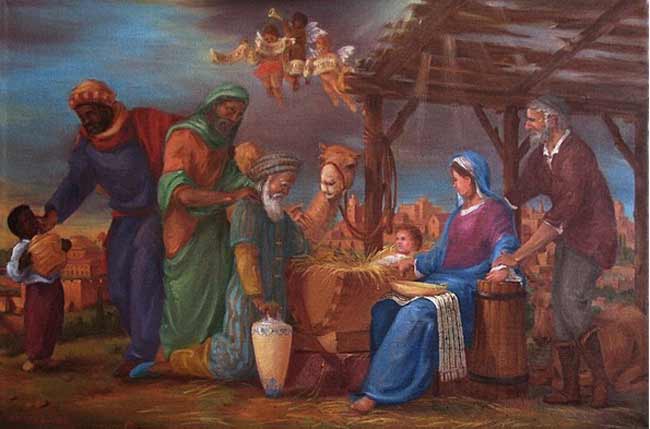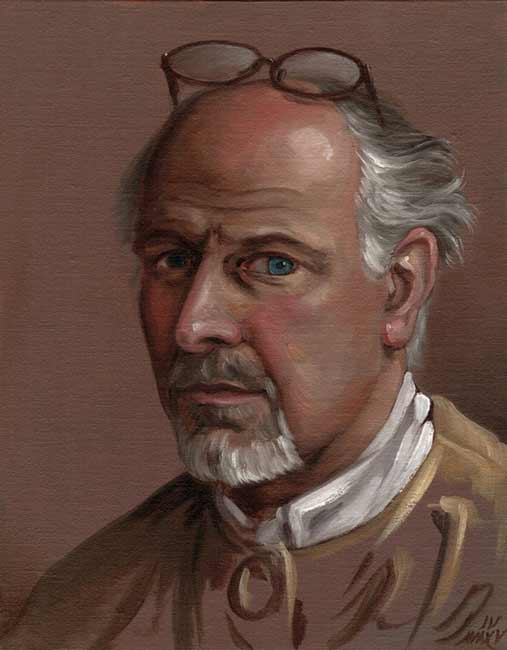David Mayernik, working in the way of the Old Masters
The classical art of the Renaissance tradition is rooted in drawing. It is this fundamental skill that allows the painter to design buildings, the designer to sculpt, the craftsman to compose. Opera sets, frescoes for theaters and churches, painted doors and frame designs; grisaille, gouache, oil, buon fresco; plein air, capriccios, and classical allegories; urban spaces, campuses, buildings; as an artist and an architect, David Mayernik works in all of these subjects and media. In other words, he practices the range of work that the Old Masters did.

David Mayernik’s plein air subjects often balance architecture and nature, exploring the poignant ways these two environments interact. He looks for structure in the landscape, and compelling chiaroscuro. Working in the field is a both an end it itself and the formation of a repertoire that informs his studio work.

The dignity of a portrait is in the sitter, and it is the painting’s task to reveal it. David Mayernik celebrates the evidence of the artist’s hand, the brushstroke that both represents something else and has its own integrity. While verisimilitude is an essential goal of all traditional painting, the quality of the act of painting is an essential aspect of the art of representation.

The pinnacle of narrative painting in the Renaissance was mural painting, especially in buon fresco. It is fresco’s integration of art into its context that parallels David Mayernik’s own practice of art and design. Like it was for the Old Masters, narrative painting is the axis about which all of his work revolves. His paintings of Apollo & Daphne choose a psychological moment after Daphne’s transformation, evoking Apollo’s remorse and Peneus’ reproach. This is a wholly new take on the story, yet rooted in the tradition. In the Renaissance tradition, the humanist culture of rhetoric and poetics gives narrative art its structure.
David Mayernik is an artist, architect, author, and educator. A Fellow of the American Academy in Rome and the Royal Society for the Encouragement of Arts, Manufactures & Commerce, he studied fresco painting with renowned restorer Leonetto Tintori in Italy. He has painted frescoes for the American Academy in Rome, the church of S. Cresci in Valcava (Tuscany), the church of S. Tommaso, Agra (Switzerland), and various buildings on the TASIS campus in Switzerland. In 2013 he won the competition to paint the Palio for Lucca, Italy. For several seasons he designed and painted stage sets for the Haymarket Opera company of Chicago. Some of those sets have informed recent easel paintings. His work en plein air has been published in American Artist and Plein Air magazines, and he has exhibited in the United States, London, and Italy.

David Mayernik has won numerous grants, awards and design competitions, including the Gabriel Prize for research in France, the Steedman Competition Fellowship to the American Academy in Rome, and the International Competition for the Minnesota State Capitol Grounds (with then partner Thomas Norman Rajkovich); that project won a 1987 Arthur Ross Award from Classical America.
David Mayernik is the author of The Challenge of Emulation in Art and Architecture (Routledge, UK) and Timeless Cities: An Architect’s Reflections on Renaissance Italy, (Basic Books), along with numerous book chapters and journal articles, including the chapter on The Baroque City in the recent Oxford Handbook of the Baroque. Before becoming an Associate Professor in the School of Architecture at the University of Notre Dame he taught perspective at the New York Academy of Art, and taught the first courses in watercolor wash rendering at the ISCA (now ICA&A). With Federico Del Carlo he has founded the Tuscan Renaissance Academy in Lucca, dedicated to the study, promotion and teaching of Renaissance art and architecture.
David Mayernik
Nov 14, 2018
